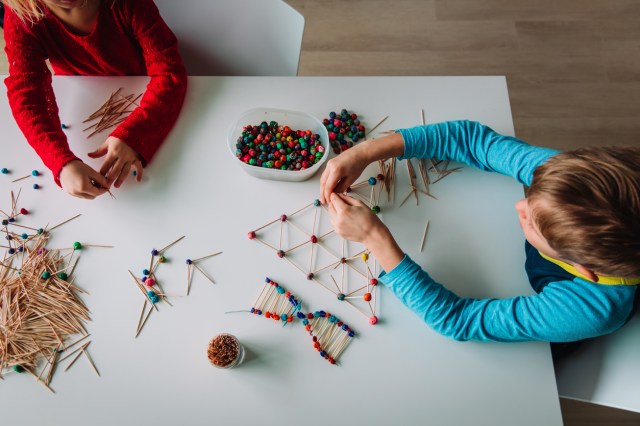If your kiddo is curious about her body, she’s probably asked you more than one semi-awkward question about anatomy. Today is National DNA Day, so it’s the perfect excuse to take the scientific discussion a little deeper by using hands-on building and fun ideas for teaching about the genetic code that makes your kiddo who she is Read on for our attempt you can totally (but not quite) copy.
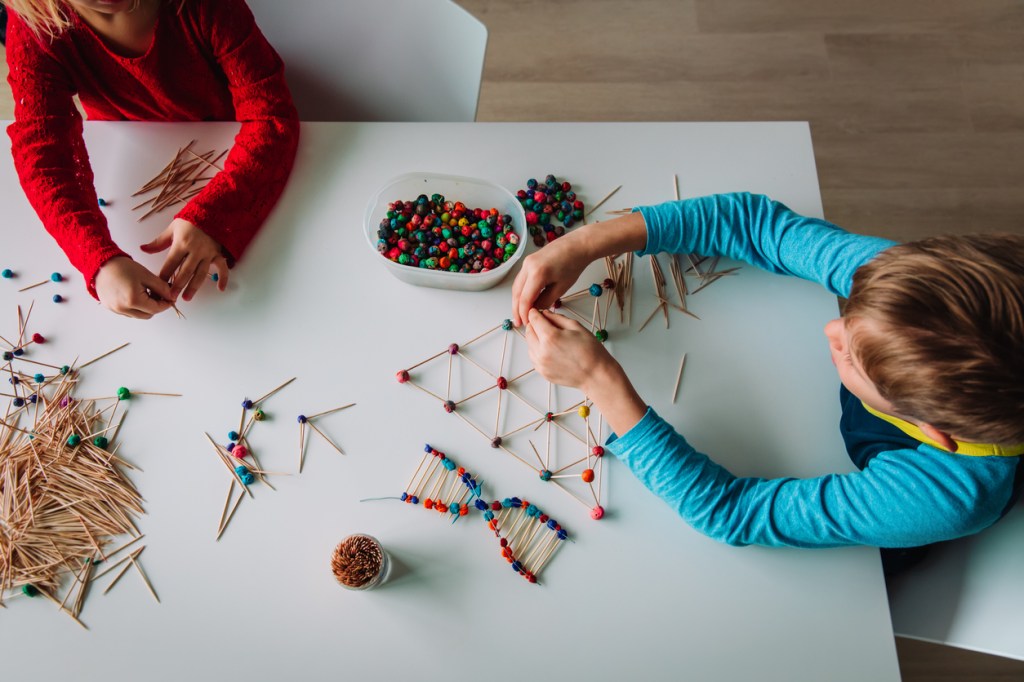
Who’s the Boss? Explaining DNA
DNA stands for deoxyribonucleic acid and is one of the two types of nucleic acid in cells. We’re made up of many, many cells that we can’t see and each cell has a job. Some cluster of cells make up our muscles, some make up our bones—and all together they make our bodies! But how does each cell know what to do? That’s where DNA comes in. It tells the cells what to do.
DNA is like the boss of the company. It gives cells instructions that it passes down in the form of “codons,” which is a three-block code. These codes are made from a string of four different letters which have best friends they favor and prefer to hold hands with. A likes T and G likes C and when put together they become instructions for the cells.
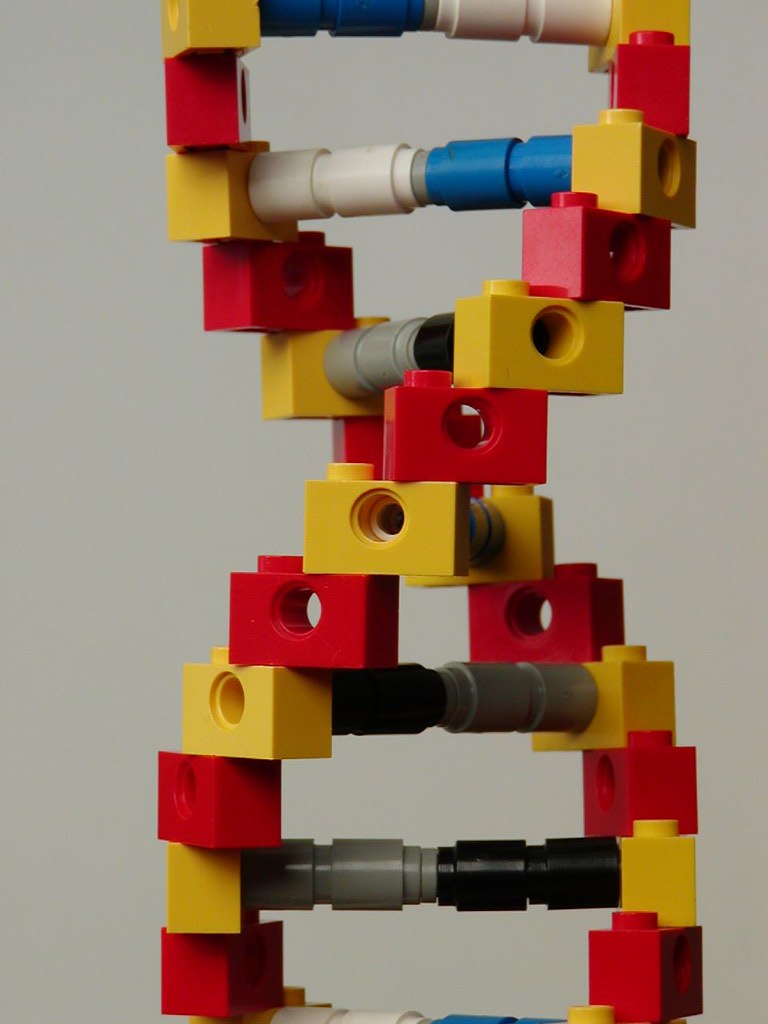
photo: Michael Knowles via Flickr
LEGO My Ego
Understanding DNA is kind of like understanding LEGOs. Imagine you have 80 LEGO bricks and only four colors to make a tower—the pattern you create will vary even though you only have four colors. Consider yourself the DNA and build, keeping two colors together at all times. You can create a short but wide tower or tall and thin one—all with the same blocks but just different combinations! The rules for those combinations come from mom and dad and the tower that comes out, the baby.
Need more tips on explaining DNA to kids? We love the way Owlcation explains it in this article.
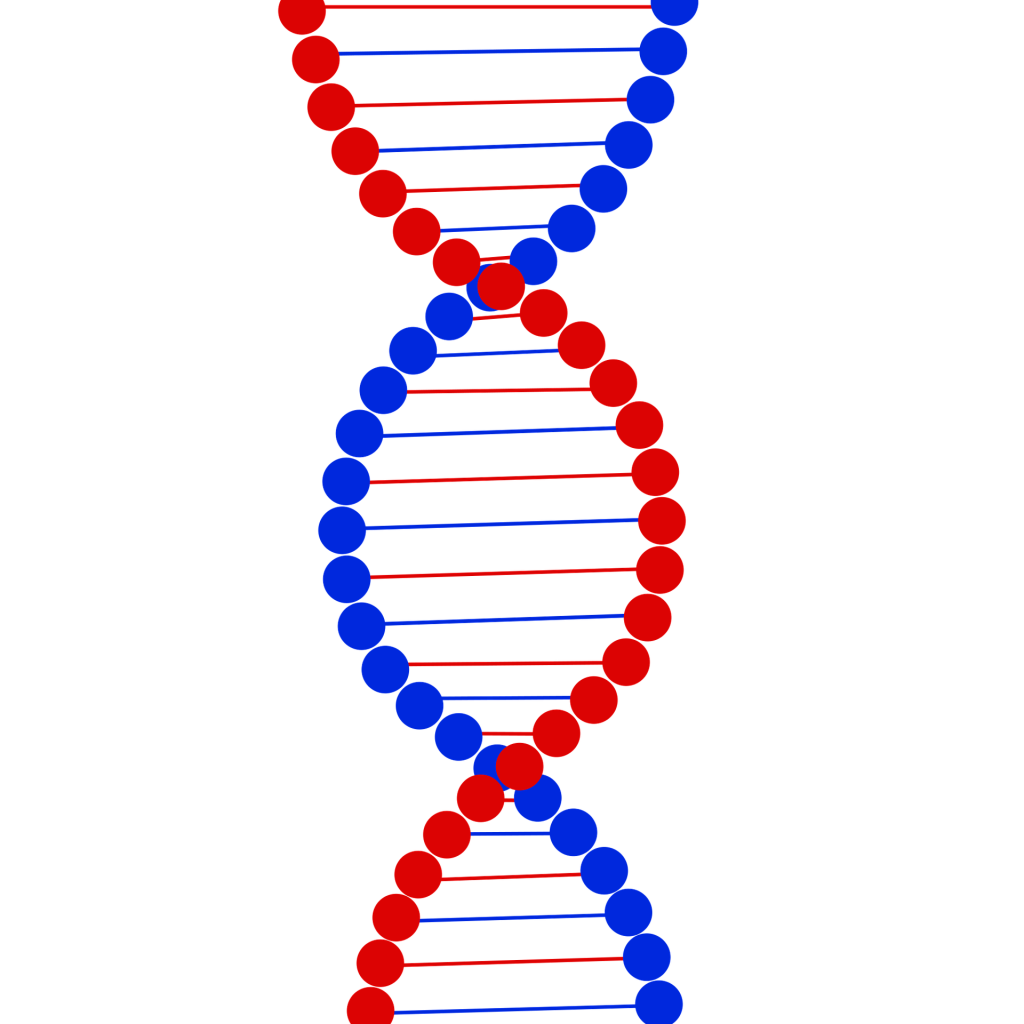
photo: ElisaRiva via pixabay
Watch Me DNA-Nay
Kids love to build, so building a model of DNA is not only a fun activity to do together, it helps children understand the concept. Using a simple illustration like the one above, find your materials and get building. Ideas include:
LEGO bricks
K’NEX
Candy (check out this cute how-to from Thought.co)
Grapes and toothpicks
Marshmallows and toothpicks
Pipe cleaners
Clay (and sticks or toothpicks)
Beads
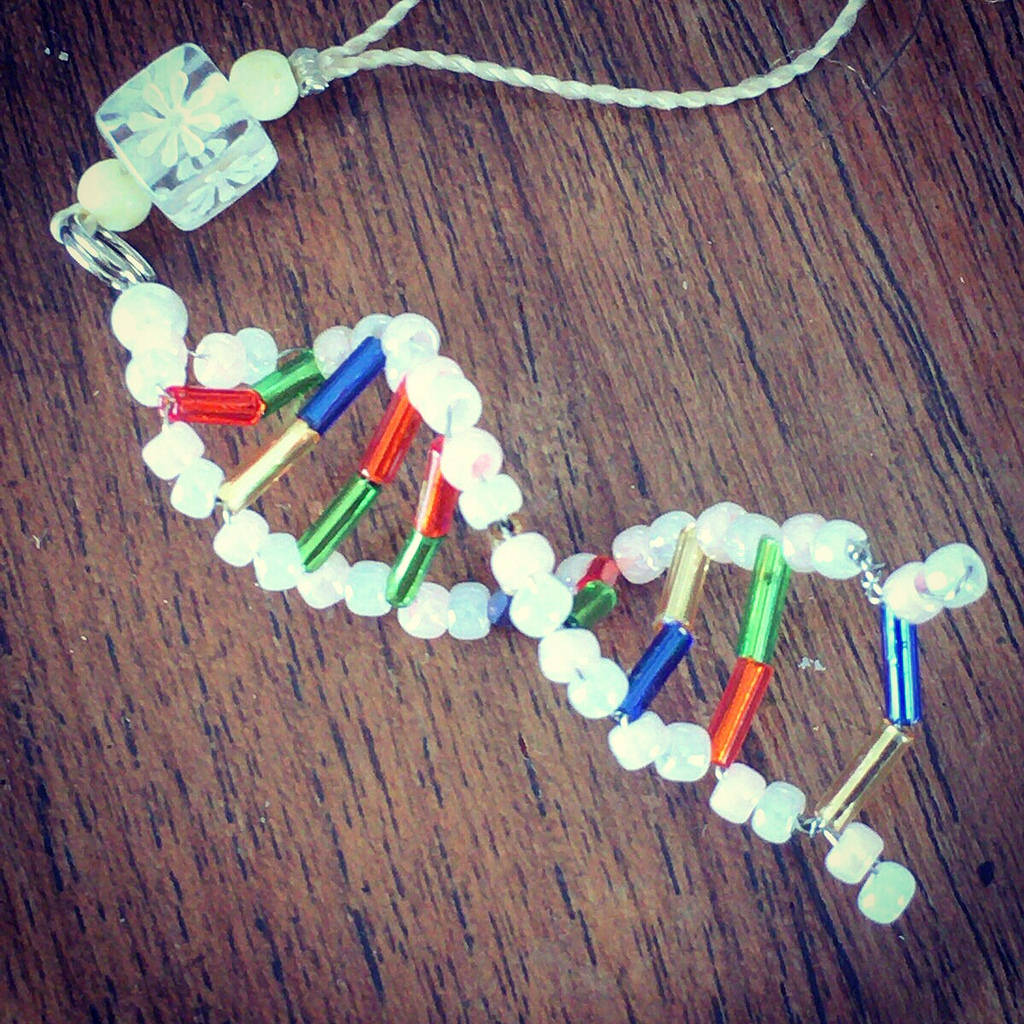
Observable Traits
Now that you’ve got a grasp on what DNA is, you can show the kiddos how these codes translate in real life by talking about a few common observable traits.
A Family Affair: Height
Totes an observable trait: If two parents are tall, odds are their kids will be tall. And if both parents are short, they’ll be short. So you can blame (or thank) your parents for your stature.
Grab a tape measure and compare stats. If grandparents are around, measure them too, or call them up and have the kids ask their height. Get aunts and uncles in on the fun too. Of course kids won’t know their full height until they are all grown-up, but it’s still a great exercise in comparing the family’s DNA results.
Simply Irresistible: Dimples
If both your parents have dimples odds are you will too, although it’s not a guarantee. Many people are born with dimples that fade over time.
Pull out the photo albums and take a peek at baby pictures of mom, dad, grandparents and other family members. See any dimples? How about mom and dad at school age?
Tongue Rolling
Can you curl your tongue up into a tube? If so, you can thank your genes for that. However, nature loves to break the rules and this one can actually be influenced by your environment: that means you can learn to roll your tongue regardless of if you have the gene. (Unless, of course, you don’t want to).
Practice some tongue rolling skills, and take stock on who can do it and who cannot. Ask friends, teachers and family members and make a tally.
—Amber Guetebier with Christal Yuen
